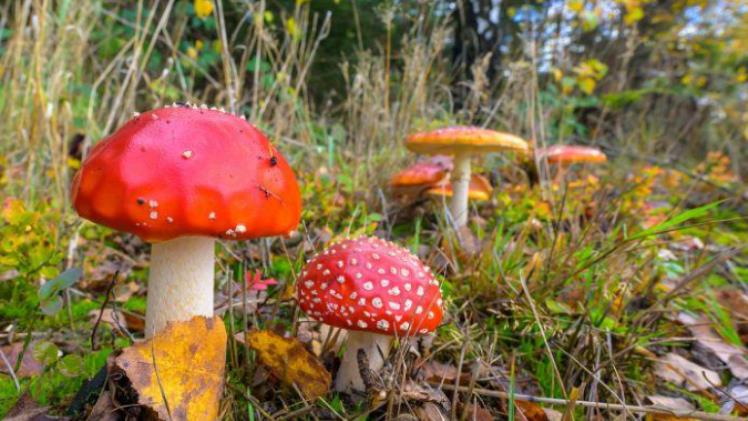Fliegenpilz Kaufen – From Myth to Market

When people hear the word Fliegenpilz, a vivid image usually comes to mind: a bright red cap dotted with white spots, standing tall in a mossy forest clearing. The fly agaric mushroom (Amanita muscaria), better known in German as Fliegenpilz, is perhaps the most recognizable fungus in the world. It is painted in children’s books, carved into Christmas ornaments, and woven deeply into European folklore. Yet in recent years, more and more people have begun searching for a practical answer: can you actually buy Fliegenpilz?
The journey from a mythical mushroom in fairy tales to a product you might find online is fascinating. To understand what it means to purchase Fliegenpilz, one must look at history, culture, legality, and the modern market.
A Mushroom of Legends
Long before the internet made “Fliegenpilz kaufen” a searchable phrase, the mushroom already held a powerful symbolic presence. In German culture, it has been considered a Glückspilz, a bringer of luck. Around New Year, porcelain or chocolate replicas of the red mushroom are gifted as tokens of good fortune. In Norse and Siberian traditions, shamans valued it for its unusual properties. Even in modern pop culture, it is the mushroom that appears in fantasy illustrations, video games, and art.
The symbolic role of Fliegenpilz explains why demand exists today. Most buyers are not searching for a meal but for a piece of culture, history, or natural beauty.
From Forests to Collectors’ Shelves
The fly agaric is native to forests across Europe, Asia, and North America. For centuries it was gathered directly from nature. Today, however, collecting wild mushrooms is not always an option. Urbanization, stricter regulations, and limited seasonal availability mean that people often turn to online sources or specialty shops.
Modern buyers usually encounter Fliegenpilz in one of three forms:
- Dried specimens – carefully preserved for display or study
- Powder or flakes – intended for research and not for human consumption
- Replicas – artistic or artificial versions used in decoration
The choice depends on personal interest. A dried mushroom may appeal to a collector, while a handcrafted replica may be more suitable for someone decorating their home with a fairy-tale aesthetic.
The Legal Landscape
Purchasing Fliegenpilz is not the same as buying edible mushrooms from the market. Since it contains psychoactive and toxic compounds like ibotenic acid and muscimol, it is regulated in different ways around the world.
In Germany and most of Europe, buying and owning Fliegenpilz is generally legal if sold for decorative, educational, or research purposes. What is not permitted is its sale as food. In other countries such as the United States or Canada, the rules vary by state and province, making it important for buyers to research local laws before placing an order.
This legal nuance explains why most online sellers clearly label their products with disclaimers such as “not for consumption” or “for research only.”
The Buying Experience
Imagine a buyer beginning their search. They might start by typing “Fliegenpilz kaufen” into a search engine. The results show a mixture of ethnobotanical websites, specialty mushroom shops, and sometimes even online marketplaces where dried specimens are listed. The process of purchasing usually involves:
- Reading the product description carefully
- Checking whether the item is dried, powdered, or artificial
- Looking for disclaimers about usage restrictions
- Reviewing shipping regulations, especially for international orders
Many responsible sellers emphasize that their Fliegenpilz products are not intended for human consumption. Instead, they market them for collectors, teachers, or cultural enthusiasts.
Why People Still Seek It
The question remains: why would someone go through the trouble of buying a mushroom that cannot be eaten? The answer lies in the mixture of fascination, symbolism, and personal interest. Fliegenpilz kaufen can be a safe and enjoyable experience if approached responsibly. Understanding the mushroom’s properties, legal status, and safe handling practices is essential. Whether for decoration, collection, or research, buying from trusted sources ensures a reliable and safe experience. Fliegenpilz remains a fascinating part of nature and culture, offering beauty, history, and curiosity to those who handle it with care.
Some buyers are artists who want real-life reference material for their paintings. Others are educators who want to show students what a toxic mushroom looks like. Collectors often view dried Fliegenpilz specimens as part of a broader passion for natural history. And for many, simply owning one represents a connection to folklore and tradition.
Risks and Responsibilities
As with any natural product, there are responsibilities that come with ownership. Improper storage can lead to decay, and mishandling could pose risks, especially for children or pets. Buyers must ensure the mushroom is stored safely in a sealed container, away from accidental contact.
Beyond safety, there is also the question of sustainability. Overharvesting from wild forests could damage ecosystems. Reputable sellers often highlight that their products are collected responsibly or sourced from cultivated environments where possible.
Modern Alternatives
For those who want the beauty of Fliegenpilz without the risks, there are many alternatives available. Artificial replicas made from ceramic, resin, or even fabric can capture the iconic look without toxicity. These replicas are widely used in holiday decorations, art projects, and garden displays.
The existence of such alternatives shows that the cultural fascination with Fliegenpilz is strong enough to create a market that goes beyond the natural mushroom itself.
Market Snapshot
To better understand the availability of Fliegenpilz, here’s a simple comparison:
| Product Type | Typical Buyer | Main Use Case | Legal Status (General) |
| Dried mushroom | Collectors, researchers | Display, study | Legal if not food |
| Powder/Flakes | Research institutions | Microscopy, education | Legal with disclaimers |
| Artificial replica | General consumers | Decoration, symbolism | Fully legal |
Looking Ahead
The idea of buying Fliegenpilz reflects a broader trend in society: the blending of tradition with modern consumer culture. What was once only found in the forest now appears in online shops, carefully packaged for collectors or curious enthusiasts. The mushroom’s symbolism as a charm of luck and mystery ensures that its market will not disappear any time soon.
As with all purchases, the key lies in responsibility. Buyers must respect local laws, understand the risks, and consider whether a replica may be a safer alternative. The enduring magic of the red-and-white mushroom, however, guarantees that the phrase “Fliegenpilz kaufen” will continue to attract attention for years to come.
Conclusion
The Fliegenpilz is far more than a simple mushroom. It is a cultural icon, a subject of fascination, and a product with a niche but steady market. Buying it today is less about consumption and more about connection—to history, to art, and to symbolism. Whether as a dried specimen on a collector’s shelf or as a handcrafted decoration in a living room, the Fliegenpilz remains a reminder that nature and mythology often walk hand in hand.



